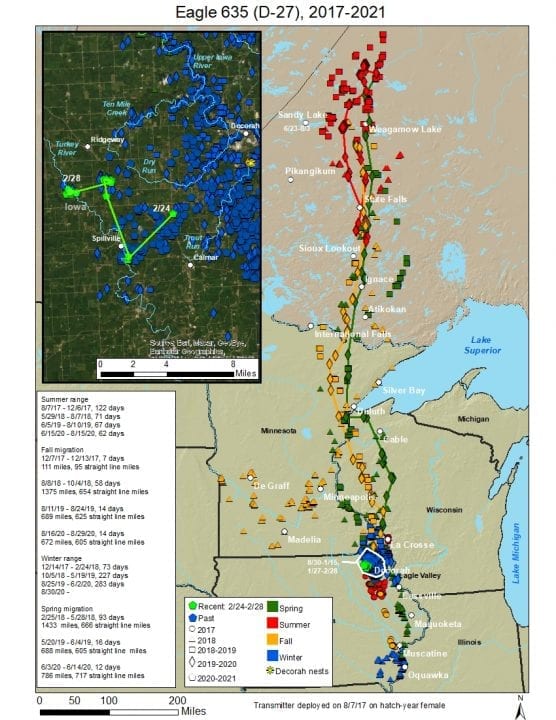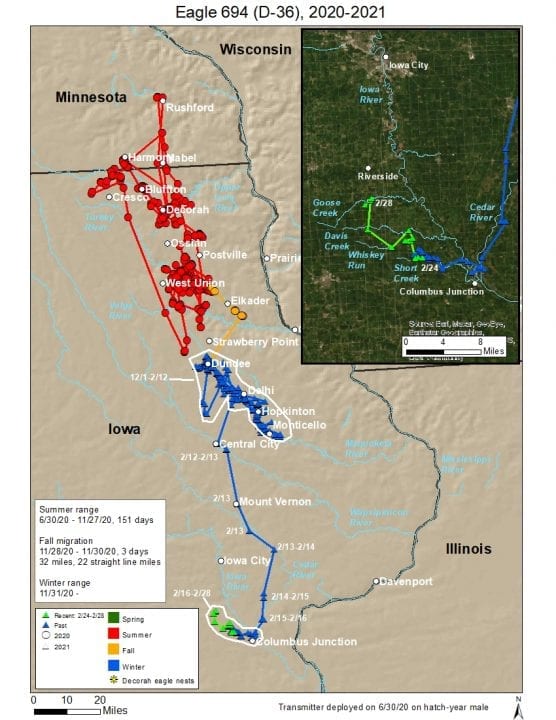Where are D36 and D27? D27 is sticking pretty close to home, although she’s starting to wander a little bit as the days lengthen and bodies of water ice out. She spent the coldest days of the polar plunge between the cities of Calmar and Spillville. In this part of NE Iowa, the Turkey River meanders between rolling hills that provide excellent cover in cold weather. If the river freezes over, feedlots provide ample opportunities for food – one of the reasons that eagles are beginning to expand into areas they aren’t historically associated with.

March 2, 2021: D27’s map
From an eagle’s perspective, confined feedlots offer a great source of free food/carrion. When female pigs or cattle spontaneously abort, or adult animals die prior to processing, the carcasses are often exposed outside. In a lot of ways, this makes sense: why waste the resources to bury or incinerate them when weather, scavengers, and insects will take care of them? But confined feedlots are also pretty new. It wasn’t all that long ago that beef and hog production required a fair amount of outdoor space. We are still discovering the ramifications of moving meat production indoors.
Where is D36?
D36 remains down near Columbus Junction. I love this part of Iowa! In the spring, river and land can be the same thing: this is true wild delta country where the Iowa meets the Mississippi River. Even when all other rivers close, nearby Lock and Dam 18 is open, drawing hundreds of eagles when everything else freezes over. But things are starting to thaw and D36 appears to be slowly circling north. We’ll see what March brings!

March 2, 2021: D36’s map
A thousand thousand thanks to Brett Mandernack, the staff of Eagle Valley, and the eagles for sharing their data, maps and expertise with us. Fly high, stay safe, and don’t forget to write!
We’re publishing Cornell University’s migration forecasts this spring. I’m looking forward to seeing how they align with our Flyway observations – can we use them for Flyway forecasting? – and the timing of our eagle migrations. If ice-out follows last year’s patterns, we should start to see groups of eagles flying north at the Flyway sometime this week. We saw our first group on March 5 last year.
We miss D35 too. We are sharing her life story in the hope that it will lead to lead-free hunting and fishing. Gone non-toxic? Please share your stories and experience with your friends. We can make a difference!
 The Raptor Resource Project
The Raptor Resource Project The Raptor Resource Project
The Raptor Resource Project